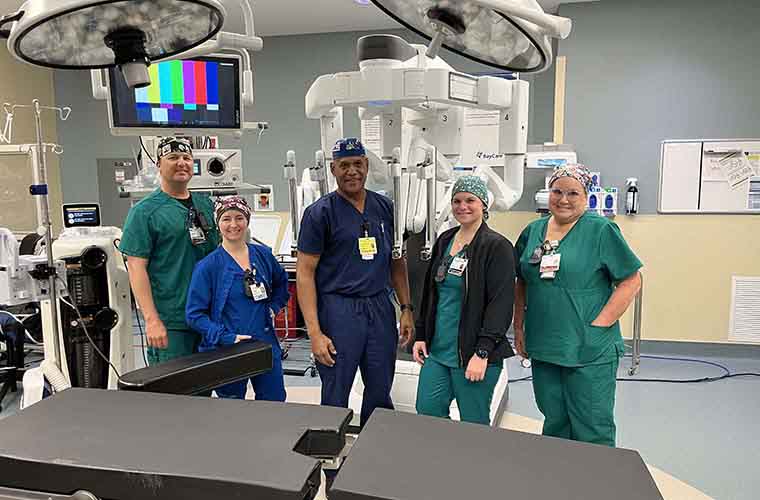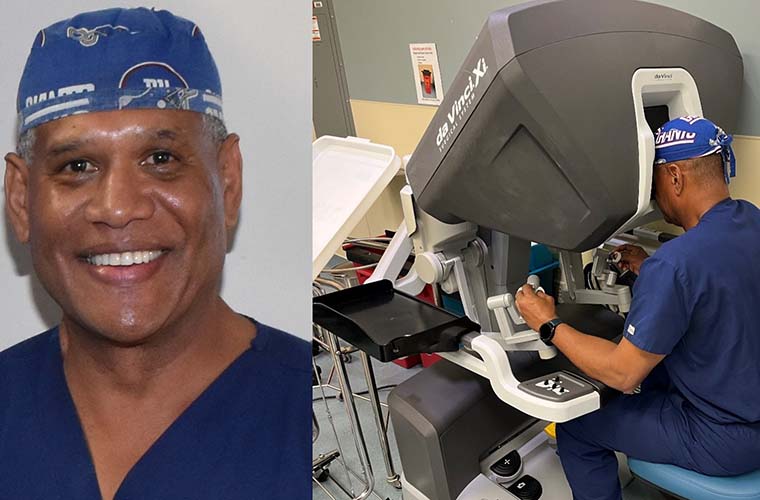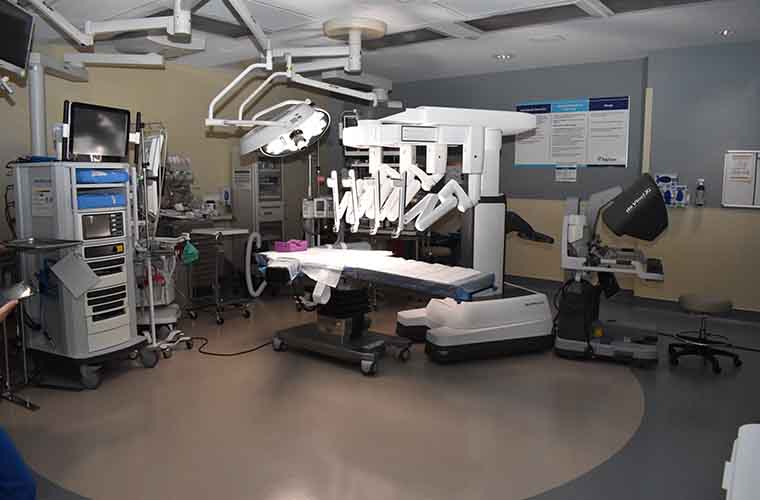St. Joseph's Hospital-South Earns Robotic Center of Excellence Designation

(This article was updated March 19, 2025) - St. Joseph’s Hospital-South has received reaccreditation as a Center of Excellence in Robotic Surgery by the Surgical Review Corporation (SRC). SRC is a leading national, independent, external evaluator of programs and services of surgeons and hospitals.
The designation signifies that the Riverview hospital’s robotic surgery services provide the highest quality of care to patients.
St. Joseph’s Hospital-South was originally accredited in 2021 and received reaccreditation in late 2024. The reaccreditation process is done every three years and the current reaccreditation is through 2027.
Bartow Regional Medical Center, St. Joseph’s Hospital in Tampa and St. Joseph’s Hospital-North in Lutz are other BayCare hospitals with Center of Excellence in Robotic Surgery accreditation by the Surgical Review Corporation (SRC).
To earn Center of Excellence designation in robotic surgery, the hospital underwent a series of inspections and visits where all aspects of the surgical program were examined and scrutinized and health outcomes of patients were reviewed. The inspection and visit process involved physicians, nurses, administrators and any others involved with robotic surgery at the hospital.

Surgeons at St. Joseph’s Hospital-South have performed nearly 3,000 robotic surgeries in the period from 2016 to 2024. In 2024, St. Joseph’s Hospital-South set its hospital record of 772 robotic surgeries. Its second-highest was 468 in 2023, a 68 percent increase from 2023 to 2024. St. Joseph’s Hospital-South has two robots and soon will add a third to meet a growing demand for robotic surgery.
The surgeon operates the robot from a console that has four interactive arms and a high-resolution screen that projects 3-D images of the surgical site. The surgeon manually operates the instruments utilizing their hands and fingers. When the surgeon moves, the instruments respond precisely to those movements in real time. The instruments work identically to the movement of a human arm, human elbow and a human wrist, however with an enhanced range of motion.
“I am fully in control of the robot, robotic surgery is not automated,” said Dr. Donovan Tapper, chief of surgery at St. Joseph’s Hospital-South and a general surgeon who has performed hundreds of robotic surgeries at the Riverview hospital in the last six years.
Dr. Tapper uses the robot in surgeries of the gallbladder, colon and for hernias and GERD (gastroesophageal reflux disease).

Benefits of robotic surgery used by St. Joseph’s Hospital-South surgeons include:
- Precise surgical incisions, allowing unhealthy tissue to be removed without affecting surrounding healthy tissue.
- Smaller incisions that can cause less trauma and pain to a patient’s body and decrease blood loss and infection risk.
- Recovery from robotic surgery may be quicker due to smaller incisions.
- Robotic surgeries may result in a shorter length of stay in the hospital. Robotic surgery is an alternative to many open surgeries that would require a hospital admission. Many robotic surgeries are done as outpatient surgery and patients are discharged on the same day as their surgery.
- Smaller scars can result from robotic surgeries.
“As a Center of Excellence in Robotic Surgery, it means that St. Joseph’s Hospital-South as a facility is prioritizing patient safety and quality metrics by offering the latest technology in minimally invasive surgery,” said Jelissa Corry, St. Joseph’s Hospital-South director of surgical services.
“We are doing everything we can to keep patients safe and give them the best experience possible,” she said. “By achieving this designation it means we have met strict criteria for both safety and efficiency practices. So, if you are having a robotic surgery, St. Joseph’s Hospital-South is where you want to get it done.”
St. Joseph’s Hospital-South performs robotic surgeries in colorectal, general surgery, gynecology, gynecologic oncology, thoracic and urologic procedures.
